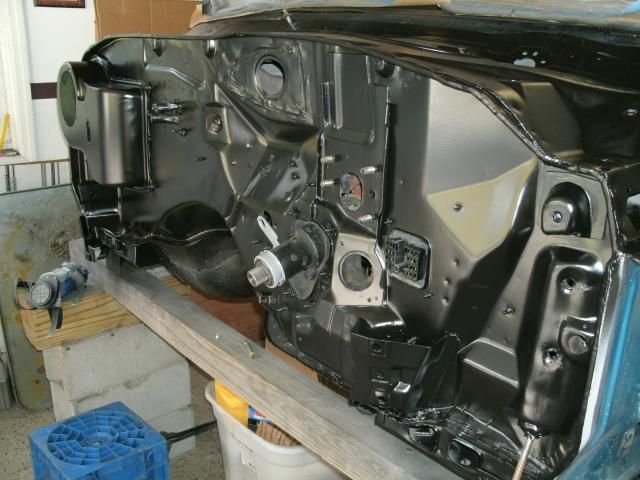P
Piston Speed
Howdy,
I have a '72 Dodge Demon on a rotisserie in which I blasted the engine bay with crushed glass. I'm going to be cleaning it with the SPI waterborne W&G remover then spraying it with SPI black epoxy. I'm also using a Devilbiss Finishline 4 spray gun with a 1.5mm tip.
Now, the firewall isn't flat and has a lot of nooks and crannies, especially a lot of narrow edges. I usually have the gun set to shoot a cigar shape 1.5" wide and 6" tall from a distance of 7". In the past, I noticed that when shooting primer on small edges like trunk gutters and whatnot, at these settings I tend to get orange peel which I do not get on flat panels.
For the engine bay, should I narrow my fan control on the gun to compensate for this? I'm assuming I'll have to also back off a little on the paint flow setting on the gun as well if I narrow the spray pattern.
Any other tips I should follow? Since the car is on a rotisserie, I'm able to stand inside the engine bay to spray.
Thanks!
I have a '72 Dodge Demon on a rotisserie in which I blasted the engine bay with crushed glass. I'm going to be cleaning it with the SPI waterborne W&G remover then spraying it with SPI black epoxy. I'm also using a Devilbiss Finishline 4 spray gun with a 1.5mm tip.
Now, the firewall isn't flat and has a lot of nooks and crannies, especially a lot of narrow edges. I usually have the gun set to shoot a cigar shape 1.5" wide and 6" tall from a distance of 7". In the past, I noticed that when shooting primer on small edges like trunk gutters and whatnot, at these settings I tend to get orange peel which I do not get on flat panels.
For the engine bay, should I narrow my fan control on the gun to compensate for this? I'm assuming I'll have to also back off a little on the paint flow setting on the gun as well if I narrow the spray pattern.
Any other tips I should follow? Since the car is on a rotisserie, I'm able to stand inside the engine bay to spray.
Thanks!


